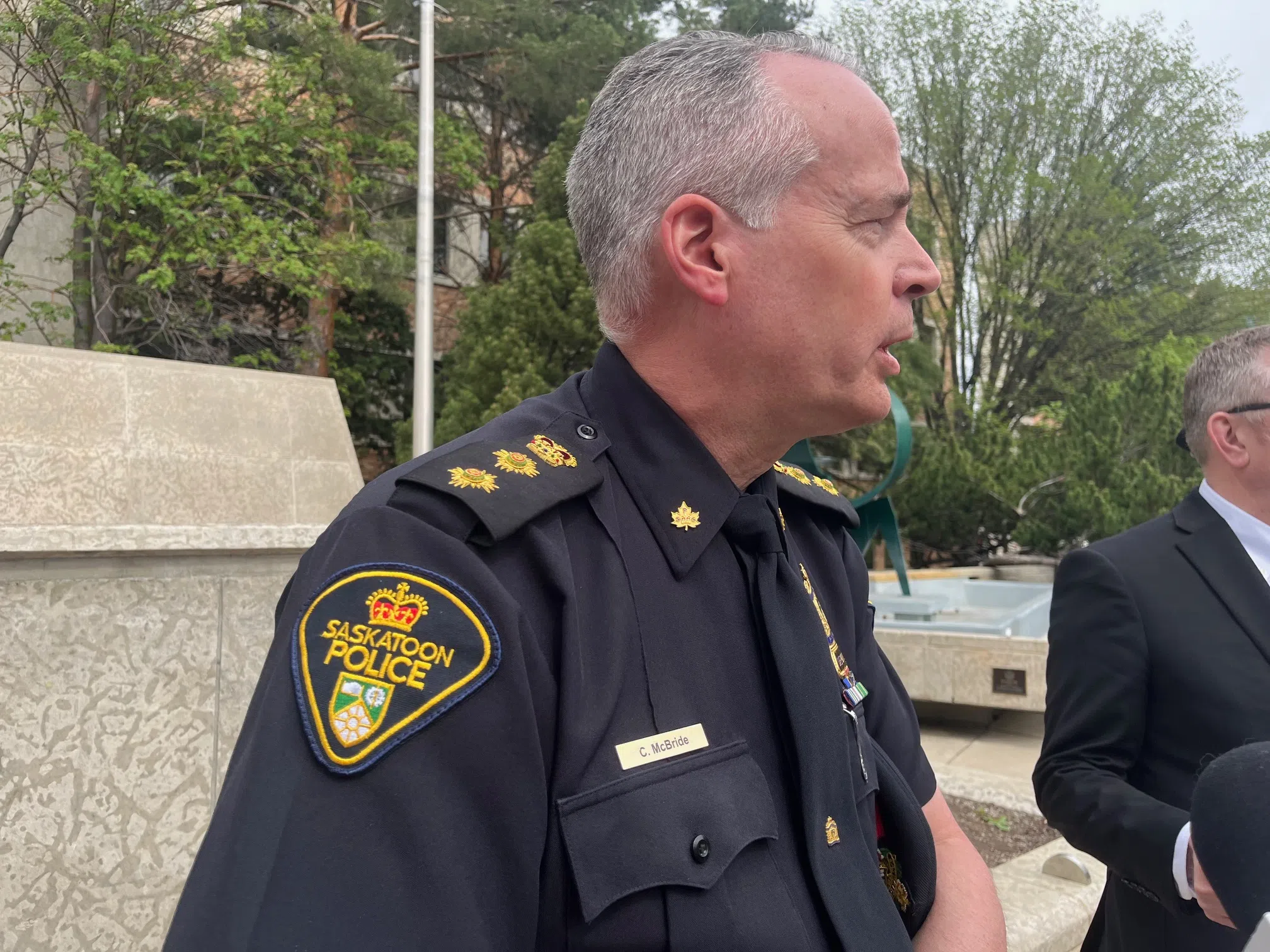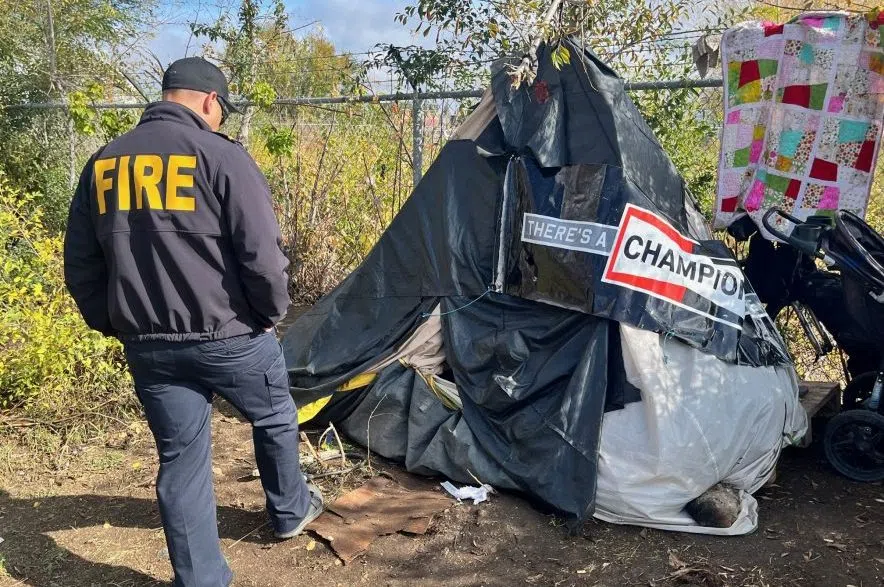This year, the city of Saskatoon has seen a growing trajectory of violent crime, encampments, and homelessness.
“We’ve already had more than half the record number of homicides by the end of April this year,” Mayor Charlie Clark said on Monday. “These incidents of violence have our full attention as a city right now.”
According to data from the Saskatoon Police Service, violent crime is up around 10 per cent in comparison to last year during the same period.
“Saskatoon’s also facing a marked increase in social disorder that’s attributed to people experiencing substance use, diminished mental health, and homelessness,” said Saskatoon’s new Police Chief Cam McBride on Monday.
“While social disorder is not necessarily associated with crime, it does impact an individual’s quality of life and all of our ability to feel safe,” he added, noting that last year 46 per cent of dispatched calls were defined as a social disorder.
But, he said that while that number has increased, property crime over that period has decreased eight per cent.
The mayor said some of the challenges lie within the lack of resources to support those in need, such as reduced hours from organizations like Prairie Harm Reduction.
According to statistics from the Saskatoon Fire Department, the number of reported encampments from Jan. 1 to May 10, 2024, is 255, more than double the 114 encampments recorded during that time frame in 2023.
The Saskatoon Fire Department recorded 372 overdoses from January to May last year, while this year the number is 520.
According to the city, the Salvation Army’s Emergency Overnight Warming Centre saw an average of 122 people a night over the winter, with a record high of 230 visitors one night in March.
Clark said the rise in crime is not only impacting families, neighbourhoods, and businesses but also public services such as the city’s transit system and libraries.
Last month, four Saskatoon Public Library locations reduced their hours to keep members and patrons safe, according to the organization’s interim CEO, Beth Cote, who said libraries cannot act as a shelter to provide support for things like health care.
The alarm was also sounded by the Amalgamated Transit Union (ATU) last month as alleged assaults have become increasingly violent.
On Monday, the Saskatoon Fire Department, Saskatoon Police, and the mayor provided an update on measures to address the issues the city is facing.
The city has previously announced the addition of alternate response officers and community support officers with a target date of July 1, as well as increased patrols from commissionaires.

Saskatoon’s Police Chief Cam McBride says Saskatoon is facing a marked increase in social disorder. (Mia Holowaychuk/650 CKOM)
McBride said there will be more community-based policing initiatives and focused support for the Pleasant Hill area through a Neighborhood Safety Intervention Strategy.
The city and Saskatoon police have also been involved in community meetings with Fairhaven and the Confederation suburban area.
Emergency Management Operations Director for the Saskatoon Fire Department, Pamela Goulden-McLeod, said the city has activated an Emergency Operations Centre to coordinate a response that enables a “one city approach.”
According to a release from the city, this involves weekly update and planning meetings from relevant city departments, the city’s fire department and police.
She said that options for additional washrooms with 24-hour staffing and security are currently being developed, and would ideally be connected to a navigation hub that can direct individuals to the services they need.
McCleod said the fire department and police service have also developed an operational safety plan for the province’s complex needs emergency shelter on Idylwyld to help with the operator’s intake and discharge plan.
“It’s critical here in the city of Saskatoon that all of the departments work together effectively, and we manage and coordinate available city resources,” she said.
–Editor’s Note: This story has been updated to correct a misspelling of Charlie Clark’s name.











